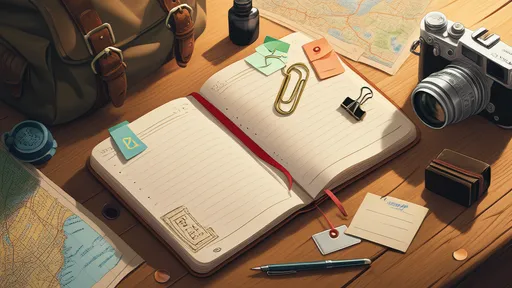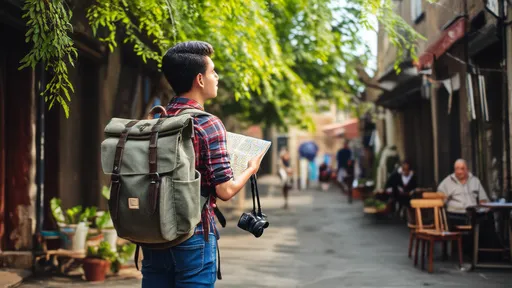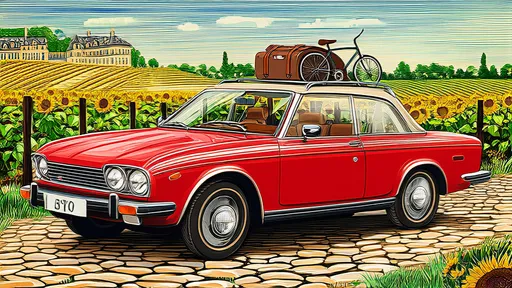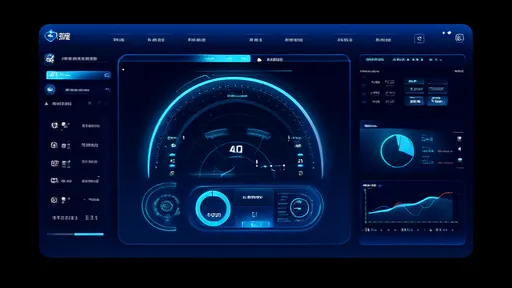There is a particular magic to returning home after a journey, a suitcase full of sandy clothes and a head full of swirling memories. The world seems both larger and smaller, and the familiar comfort of your own bed feels like the greatest luxury. Yet, amidst this pleasant exhaustion, a new, less glamorous journey begins: the process of unpacking not just your belongings, but your entire experience. The digital camera is bursting with photos, your wallet is a paper tomb of boarding passes and museum tickets, and your mind is a jumble of sights, sounds, and emotions. Left unattended, this precious cargo can become a disorganized digital shoebox or a faded paper pile, its significance diminishing with time. The art of travel archiving is not merely about organization; it is about actively preserving the essence of your adventure, transforming ephemeral moments into a tangible, lasting narrative that you can revisit for years to come.
The initial wave of post-trip fatigue often tempts us to dump our memory cards into a generic "Vacation 2023" folder on the desktop, promising ourselves we will sort it all out later. This, of course, almost never happens. The key to avoiding this digital purgatory is to establish a simple but consistent workflow immediately upon your return, before the daily grind erases the fresh details from your mind. Start by gathering all your digital sources—the photos from your camera, your smartphone, perhaps even a drone or a GoPro. Do not fall into the trap of keeping seventeen nearly identical shots of the same mountain peak; this is your first and most crucial act of curation. Be ruthless. Ask yourself: does this image truly capture a feeling, a story, or a unique perspective? Keep the one where your partner is laughing with wind-swept hair, not the five slightly blurry ones where they are squinting into the sun. This initial culling is not about deletion; it is about respect for your own story, ensuring that only the most meaningful visuals are carried forward.
Once you have a refined collection, the next step is to implement a logical and descriptive filing system. Avoid vague names like "DCIM" or "Photos." Instead, create a master folder for the year, and within it, a subfolder named with the destination and dates—for example, 2023_10_Japan_Kyoto. This structure allows for effortless chronological browsing. For the photos themselves, consider renaming the files from their arbitrary camera-generated codes to something more meaningful. Software like Adobe Lightroom, or even free tools like Photo Mechanic, can batch-rename files using a template. A format such as YYYY-MM-DD_Location_Description.jpg (e.g., 2023-10-22_Kyoto_Fushimi-Inari-Sunset.jpg) works wonderfully. It embeds the context directly into the filename, making it searchable and instantly understandable years later when the memory of the exact date has faded. This small investment of time pays infinite dividends in future accessibility.
While our world is increasingly digital, the physical artifacts of travel possess a unique, tactile charm that a JPEG can never replicate. That crumpled train ticket from a scenic railway journey, the faded entry stamp in your passport, the beautifully designed map from a hidden gallery—these objects are historical documents of your personal exploration. They should be treated not as clutter, but as curated exhibits. Begin by gathering all these paper memories into one place. Smooth out the tickets and brochures, perhaps even giving them a gentle press under a heavy book for a day to remove any stubborn folds. This immediate care prevents them from becoming a crumpled, forgotten mass at the bottom of a backpack pocket, destined for the recycling bin.
The goal is to integrate these physical items with your digital archive, creating a rich, multi-sensory record. A simple and highly effective method is to photograph or scan these paper mementos. Lay them out on a clean, well-lit surface and use your smartphone or a flatbed scanner to create high-quality digital copies. These scans can then be placed within your digital photo folders, positioned chronologically amongst the pictures from that same day. Imagine browsing your photos from Rome and coming across a image of the Colosseum, followed immediately by a scan of your actual ticket to enter it. The connection between the digital and the physical becomes seamless, each enhancing the value of the other. For the originals, a dedicated archival box or a simple, elegant scrapbook is ideal. Use acid-free photo corners or tape to secure the items, and perhaps jot down a short note next to each one—the name of the café on the receipt, the reason you loved that particular museum. This physical album becomes a cherished artifact in its own right, a book of your own adventures to leaf through on a quiet afternoon.
Perhaps the most elusive, yet most valuable, elements of your travel archive are the memories themselves—the intangible feelings, the conversations, the smells of a street market, the taste of a specific dish. These are the details that photos and tickets can hint at but never fully capture; they are the color and the soul of your experience. If you kept a travel journal during your trip, you are already ahead of the game. If not, it is not too late. Set aside an hour soon after you return to download your mind. Do not just list what you saw; write about how it felt. Describe the elderly shopkeeper who taught you how to properly say "thank you." Write about the unexpected rainstorm that forced you into a tiny café where you had the best pastry of your life. These anecdotes are the golden threads that weave your photos and tickets into a coherent and emotional narrative.
Technology offers powerful tools to augment this process. Use a note-taking app like Evernote or OneNote to create a dedicated note for your trip. Here, you can amalgamate everything: you can write your reflections, embed photos from your sorted folders, and even attach scans of your tickets. You can create a digital map and pin your route and key locations. For a more auditory memory, consider keeping a voice memo journal next time; hearing your own excited, tired, or amazed voice recounting an event days later is a powerfully evocative experience. These digital assemblages become interactive memoirs, far richer than a simple photo album.
The final, and most rewarding, phase of travel archiving is not about storage, but about integration. An archive that is never revisited is merely a collection. The true value of your meticulous work is realized when you actively bring your adventures back into your life. Create a physical photo album of the best shots using a service like Mixbook or Shutterfly. Frame a few exceptional photographs and rotate them on your walls. Use a service like Traveler's Company to create a yearly timeline of your trips. During a family gathering, pull out the scrapbook and tell the stories behind the tickets. On a rainy Sunday, browse through your digital photo library, allowing the memories to wash over you. This active remembrance does more than just combat nostalgia; it reinforces the transformative impact of your travels, reminding you of who you were in those moments and how the experience shaped you.
In the end, the act of archiving is a profound gesture of respect—for the places you visited, the experiences you had, and for your future self. It is a promise that those sun-drenched days and starlit nights will not simply evaporate into the fog of passing time. By thoughtfully curating your photos, preserving your physical tickets, and diligently recording your memories, you are not just organizing data; you are building a library of your life's most vibrant chapters. You are ensuring that the joy, wonder, and growth you found on the road remain a permanent, accessible, and inspiring part of your story, long after the suitcase has been stored away and the passport stamp has faded.

By /Aug 22, 2025

By /Aug 22, 2025

By /Aug 22, 2025

By /Aug 13, 2025

By /Aug 13, 2025

By /Aug 13, 2025

By /Aug 13, 2025

By /Aug 13, 2025

By /Aug 13, 2025

By /Aug 13, 2025

By /Aug 13, 2025

By /Aug 13, 2025

By /Aug 13, 2025

By /Aug 13, 2025

By /Aug 13, 2025

By /Aug 13, 2025

By /Aug 13, 2025

By /Aug 13, 2025

By /Aug 13, 2025

By /Aug 13, 2025